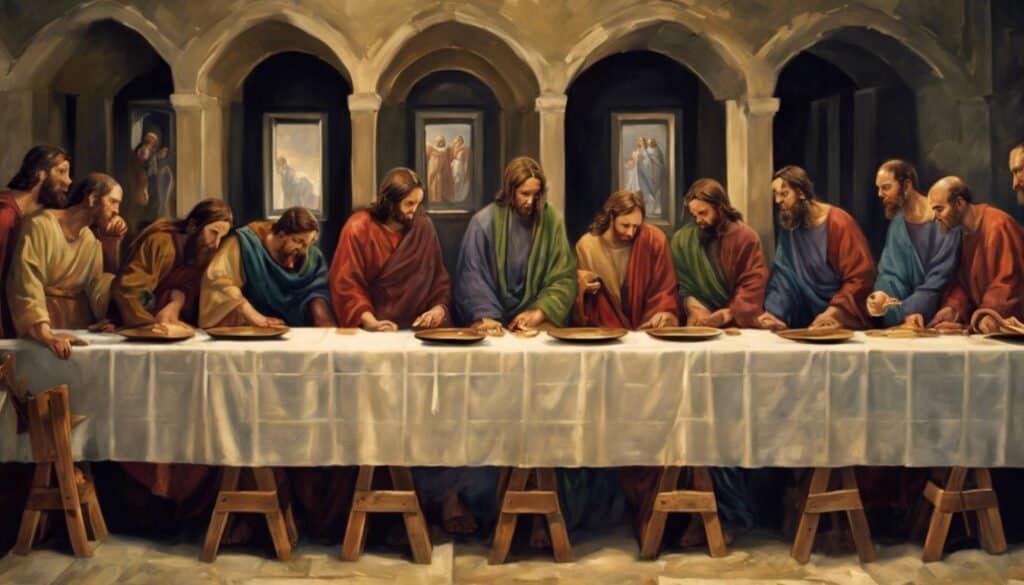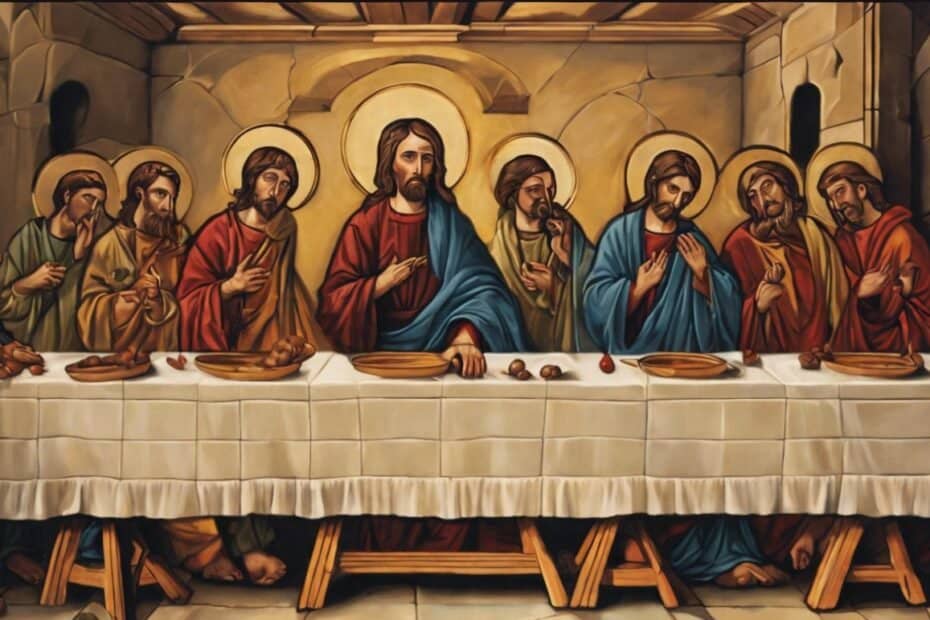Holy Maundy Thursday, also known as Holy Thursday or Sheer Thursday, is an important day in the Christian calendar. It falls on the Thursday before Easter and marks the commemoration of the Last Supper that Jesus Christ shared with his 12 disciples on the night before his crucifixion.
Maundy Thursday is packed with major events that occurred on this day according to the Gospels. Christians observe Maundy Thursday in preparation for the celebration of Easter. The word “Maundy” comes from the Latin word “mandatum”, meaning “commandment.” At the Last Supper, Jesus commanded his disciples to remember him by partaking in the Eucharist. He also gave them a new commandment – to “love one another as I have loved you.”
This essay will explore the significance and traditions of Maundy Thursday for Christians worldwide. It will cover:
Table of Contents
- The origins and meaning of Maundy Thursday
- The events of the Last Supper
- The washing of the disciples’ feet
- Modern Maundy Thursday church traditions
- The importance of remembering Christ’s commandment to love
Let’s delve into the history and practices surrounding this meaningful Holy Day in the Christian faith.
The Origins and Meaning of Maundy Thursday
The Thursday before Easter is known by several different names in the Christian tradition:
- Maundy Thursday
- Holy Thursday
- Covenant Thursday
- Great and Holy Thursday
- Sheer Thursday
- Thursday of Mysteries
“Maundy” derives from the Latin word “mandatum” meaning “commandment.” At the Last Supper, Jesus gave his disciples a new commandment to love one another as he loved them.
Other names for the day emphasize its holy meaning. It marks the beginning of the Three Days (Triduum) – the period when Christians remember the Passion, death, and resurrection of Jesus Christ.
The day is packed with major events according to the Gospels:
- The Last Supper when Jesus instituted the Eucharist
- Jesus washing his disciples’ feet as a lesson in humility and service
- Judas’ betrayal of Jesus
- Jesus’ agony in the garden of Gethsemane
Maundy Thursday sets the stage for Good Friday and then the joy of Easter Sunday.
The Events of the Last Supper
The centerpiece of Holy Thursday is the Last Supper, when Jesus and his disciples shared a final meal together on the night before his crucifixion.
The Last Supper is recorded in the Gospels:
Now on the first day of Unleavened Bread the disciples came to Jesus, saying to Him, “Where do You want us to prepare for You to eat the Passover?” – Matthew 26:17
During this Passover meal, important events took place:
- Jesus washed the feet of his disciples, modeling humility and servitude
- He predicted his betrayal by Judas Iscariot
- He instituted the Holy Eucharist, sharing bread and wine with his disciples
As they ate the Passover meal, Jesus took bread and wine and asked his disciples to consume them in remembrance of his sacrifice to come on the cross.
And he took bread, gave thanks and broke it, and gave it to them, saying, “This is my body given for you; do this in remembrance of me.” – Luke 22:19
Christians commemorate this institution of the Eucharist on Maundy Thursday with Communion services and the Eucharistic meal.
The Washing of the Disciples’ Feet
One of the most iconic events of Maundy Thursday is Jesus washing the feet of his disciples.
Jesus knew that the Father had put all things under his power, and that he had come from God and was returning to God; so he got up from the meal, took off his outer clothing, and wrapped a towel around his waist. After that, he poured water into a basin and began to wash his disciples’ feet, drying them with the towel that was wrapped around him. – John 13:3-5
By taking on the role of a servant, Jesus demonstrated that the disciples should love one another through humble service.
Washing feet was a menial task, usually done by slaves. But Jesus told his disciples:
“Now that I, your Lord and Teacher, have washed your feet, you also should wash one another’s feet. I have set you an example that you should do as I have done for you.” – John 13:14-15
Many churches re-enact the foot washing ceremony on Maundy Thursday to commemorate Jesus’ lesson in humility.
Modern Maundy Thursday Church Traditions
Christians worldwide observe Maundy Thursday with solemnity and celebrate the events of the Last Supper. Here are some common traditions:
- Holding a Communion service where worshippers partake of the Eucharist
- Conducting foot washing ceremonies to mimic Christ’s gesture of humility
- Stripping the altar of decorations after service to represent Jesus being stripped of his garments
- Ringing bells or clappers to commemorate the ceasing of bells on Good Friday
- Some churches bless oils to be used in baptism, confirmation, and anointing of the sick
The table below outlines the key events and traditions associated with Maundy Thursday for Christian churches:
| Event | Description |
|---|---|
| Communion Service | Remembering the Last Supper when Jesus instituted the Holy Eucharist |
| Foot Washing Ceremony | Re-enacting Jesus washing his disciples’ feet and commanding them to serve others |
| Stripping the Altar | Removing all decorations; often done in silence |
| Tenebrae Service | Holding a service of shadows to reflect on Christ’s suffering |
| Bell Ringing | Ringing bells then silencing them until Easter; also using clappers |
| Blessing of Oils | Blessing holy oils used in sacraments throughout the year |
These solemn rituals help Christians meditate on Christ’s love and sacrifice in preparation for Good Friday and Easter Sunday.

The Importance of Christ’s Commandment to Love
At the Last Supper, Jesus gave his disciples a new commandment to “love one another.”
“A new command I give you: Love one another. As I have loved you, so you must love one another. By this everyone will know that you are my disciples, if you love one another.” – John 13:34-35
This underscores the message of Maundy Thursday. Christ’s sacrificial love was meant as an example for Christians to follow in their own lives.
By loving and serving others, Christians emulate Jesus. This could mean:
- Reaching out to those in need
- Volunteering at a homeless shelter
- Donating to charity
- Visiting the sick
- Practicing humility like foot washing
- Participating in communion and worship
Maundy Thursday teaches that love for God and others is paramount in the Christian faith.
Conclusion:Holy Maundy Thursday
Holy Maundy Thursday is rich with meaning and tradition for Christians. It commemorates the Last Supper, the washing of the disciples’ feet, and Jesus’ commandment to love one another.
On this day, Christians remember:
- Christ’s sacrifice through Holy Communion
- His humility through foot washing ceremonies
- His command to love and serve others
Maundy Thursday marks the beginning of the Easter Triduum. The night’s events set the stage for Good Friday and the joy of Easter resurrection.
This Holy Day allows Christians to reflect on Jesus’ remarkable act of love and prepare their hearts for the celebration of his resurrection victory.





